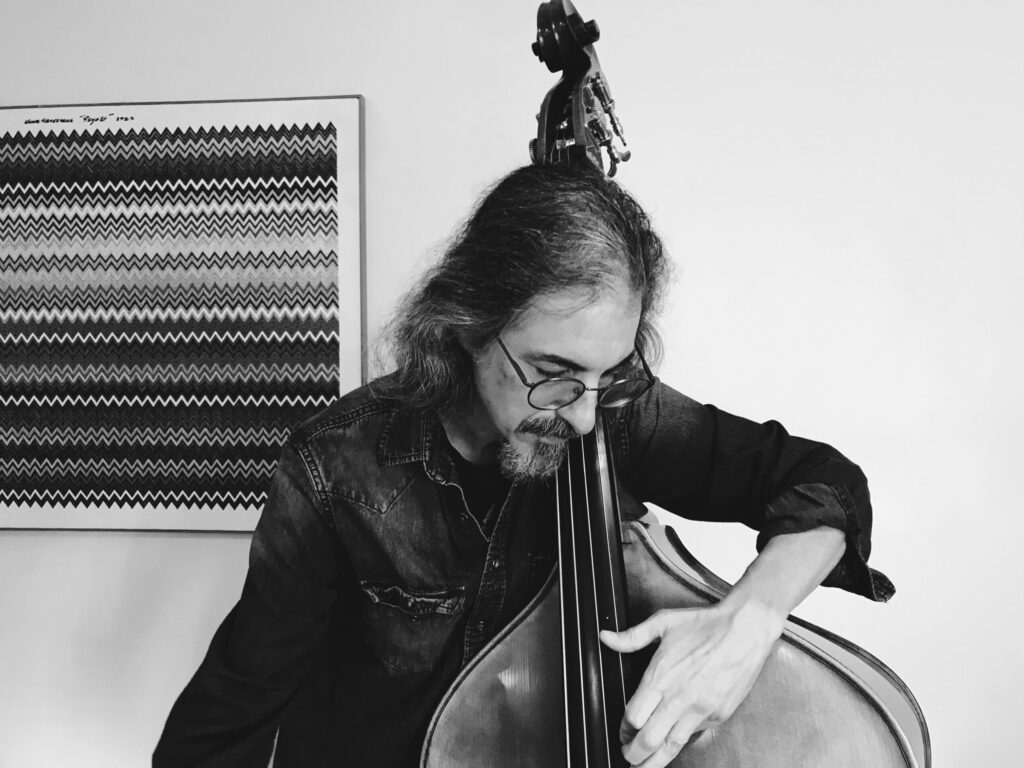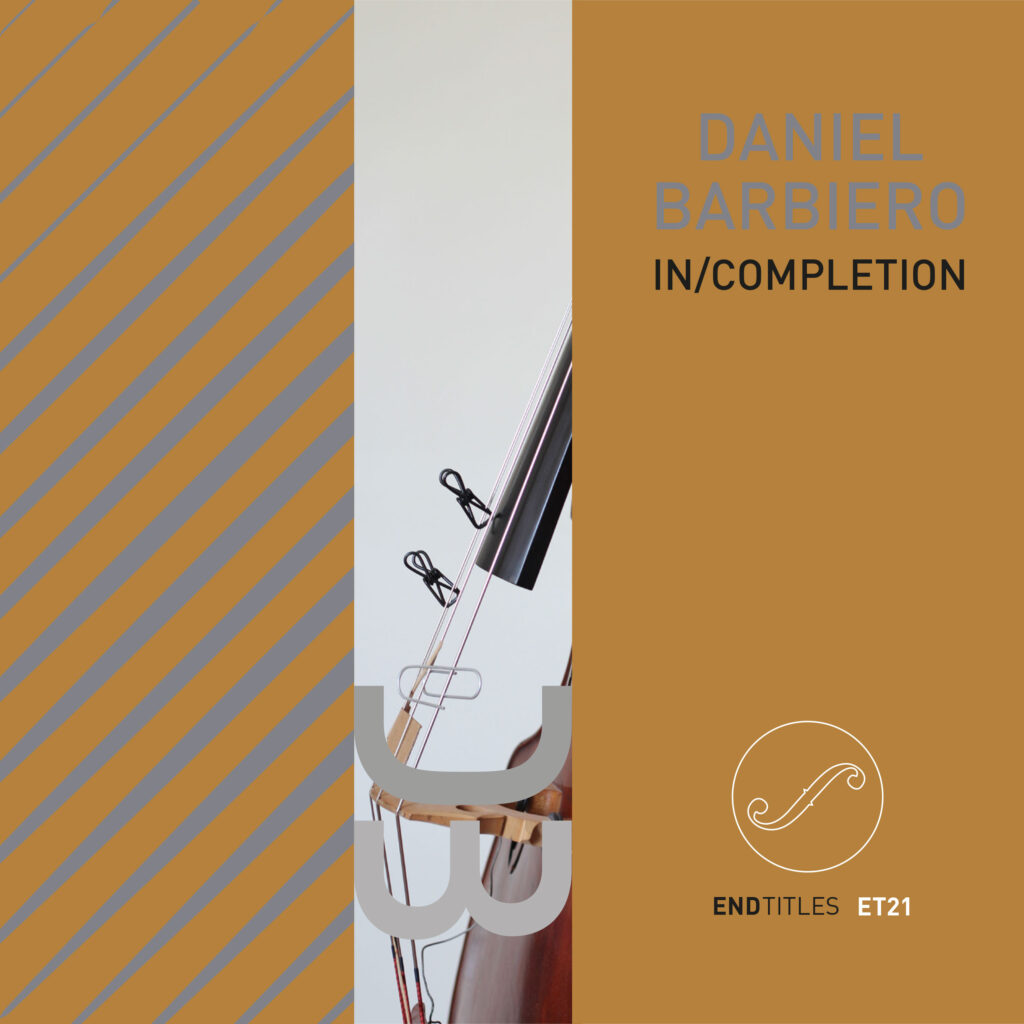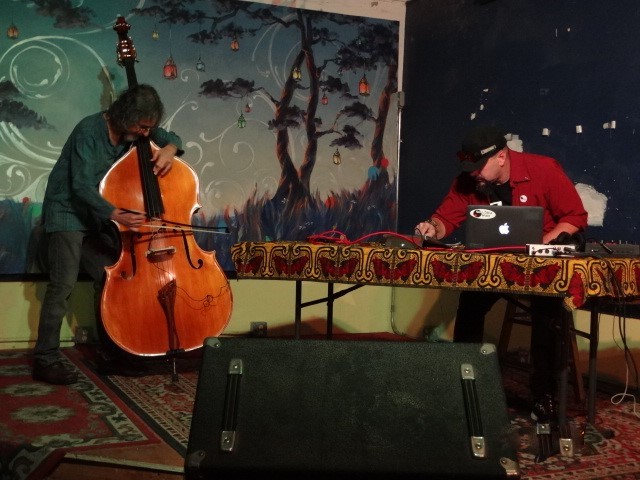Daniel Barbiero

Daniel Barbiero: In/Completion

At their best, graphic compositions are both beautiful and provocative. Beautiful in that they can, when artfully done, stand as independent works of visual art. Provocative, because they ask the performer to act as a kind of co-composer—they provoke him or her to make musical choices that, in the absence of specific instructions encoded in standard notation, somehow will translate the markings on the page into concrete gestures producing real sound. Mutatis mutandis the same observation can be made of verbal scores, many of which approach poetry in their use of condensed, evocative language. Both types of scores provoke and inspire by creating an atmosphere in the way that an abstract painting or a poem might create an atmosphere: suggestively, through connotation rather than denotation.
Diverse as they are, all of the compositions in this collection have one thing in common. All of them, by leaving crucial musical and structural parameters undefined, are as much situations or events as they are works–situations to which the performer must respond with an ongoing series of decisions based on significantly discretionary, interpretive judgments. Consequently, the marks on the page (and in one case, the wall) may be thought of as enabling constraints that, in their refusal to fully prescribe a course of action, invite the engaged choices that will realize them as specific sounds and gestures.
In the works performed here, a significant aspect of the meaning inheres in the concrete procedural or technical choices through which the performer, in concert with the initial conditions set out by the score, completes the work. Before performance the work is in a state of incompletion; the performer acts in completion of the work. Hence the title of this collection.
I think of these performances as collaborations in which each of us—the composer, who creates a set of initial conditions or parameters expressed as more or less open variables, and I, who must interpret the implications of those conditions and realize them with concrete values—has an essential part to play, even if at a distance of space or, as in the case of Root Music, of time.
My thanks go to the composers represented here, some of whom composed works for me and others who encouraged me in my interpretations of previously composed work.
Daniel Barbiero, Silver Spring MD, September 2020
Read more about the Artist
Reviews:
OPDUVEL Eigenwijs over muziek en herrie
EndTitles, 2020
Daniel Barbiero is een bassist en geluidskunstenaar, opererend vanuit de omgeving Washington DC. Hij is thuis in geïmproviseerde en experimentele muziek, werkt als componist en ensembleleider, maar heeft ook muziek gemaakt voor dans en film. De muziek van de Amerikaan heeft vaak een conceptuele oriëntatie en hij heeft onder meer interesse in het pantonale vocabulaire en compositie in open vorm-structuren.
Van dat laatste aspect is het nu verschenen solo-album een goed voorbeeld. De acht stukken die op In/Completion zijn te horen, zijn namelijk allemaal gebaseerd op grafische partituren (graphic scores). Doordat geen sprake is van noten die exact bepalen hoe een stuk moet klinken maar van een visuele weergave van wat de componist voor ogen heeft, laat een dergelijke compositie ruimte voor interpretatie door de uitvoerende muzikant. De componist levert de score, de muzikant vult in. De laatste moet aan de slag en daarbij zijn muzikaliteit en creativiteit aanspreken. Het inlevingsvermogen en de visie van de muzikant bepalen uiteindelijk hoe een stuk zal gaan klinken.
Sondare l’elettroacustico: su Daniel Barbiero e Cristiano Bocci

EndTitles, 2020
Essere consapevoli dei cambiamenti intervenuti negli stili e nelle modalità di rappresentazione della musica è materia che ogni musicista cerca di plasmare a suo modo, secondo una propria concezione. C’è chi, poi, cerca di dare un contributo in ognuno dei sistemi creati: concentrato sul contrabbasso…
Foto by Logan Mitchel
Meeting the artist. An Interview.
ET:What is your new album «In/Completion» about?
DB: In/Completion is a collection of open-form scores, all but one by contemporary composers, that I interpreted and performed on solo double bass. I’ve been interested in unconventional forms of notation—graphic scores, verbal scores and the like—for many years, and In/Completion represents the coming to fruition of a long-standing wish
to gather together a diversely-notated set of compositions and realize them. I chose the title of the album very deliberately, since I feel that the realization of an open-form
score in performance counts as a way of completing it. When we first come to a score leaving many of the musical decisions open and many of the musical parameters undefined, we find it in a state of incompletion. When we interpret and perform it we do so in completion of the work. With the exception of Morton Feldman’s classic graph paper score, Projection 1, I chose to work with contemporary composers because I wanted the project to be one in which the relationship between the composer and myself as performer would feel fully collaborative. Even for the works that weren’t written for me—again, of course, with the exception of Projection 1—I could feel that the composer was there as a living presence, and that was a very important aspect of the project for me.
ET: What was your instrumental approach for the album?
DB: It was a very simple one, really: just to play everything on acoustic double bass live in the studio, with no overdubs or electronic interventions. I did use preparations for a couple of the pieces, where I thought the score seemed to suggest the kinds of timbres one can only get by altering the instrument in some way. And I drew on extended techniques when I thought those were appropriate to the spirit or the letter of the score. But in the end all of these methods were subordinated to a more encompassing end, which was to create something that would be moving as music. Because open-form scores, for all of the challenges they raise, both on the intellectual or conceptual level and on the technical and interpretive level, really do exist to be heard as music.
ET:What are your main music related influences?
DB: Almost too many to mention! But I’ll try…Probably the most important set of influences comes from late 20th century art music—the experiments with form, with notation of course, with performance techniques, and with instrumentation and timbre. Through the accidental fact of having been born at a particular time, the 1970s were my formative years; it was a time when much of this was still relatively new and not completely understood. But it did give me a sense of what music should sound like, particularly in its overall or textural dimension–how voices should interact or stand by themselves, and how musical space should “breathe,” I suppose you could say. The musical territory these experiments opened up has proven to be highly fertile and I feel has yet to be fully explored. Another very important source of influence and inspiration has been Hindustani classical music, particularly music of the sarangi. There’s a vocal quality to the instrument’s sound that I find very attractive—something inherent in the timbre and range but also in way it’s often played, particularly in the phrasing. And various kinds of improvised music, especially some of the creative offshoots of jazz, were important models as well. I should add that much of what I try to capture or convey through music comes by way of extra-musical influences which are very important musically—the paradoxes and gnomic sayings of the Eleatic and Ionian philosophers, for example, or the enigmatic ambience of metaphysical painting, or some of the imaginative non-fiction of the last century.
ET: Tell us more about your work?
DB: I’m mostly an improviser, but I also like to work with unconventionally scored, open-form compositions. What attracts me to improvisation is the way that it seems to encapsulate in miniature existence writ large—what the philosopher Ortega y Gasset described as “a permanent crossroads, a perplexity”–in which one is constantly faced with the need to make choices in order to respond in real time to often unexpected circumstances. That may be life, but it seems to describe free improvisation quite well! And with open-form compositions one is in a similar situation, but there, some of the choices may be constrained by limits placed on them by the score. Still, it’s a situation to which one must respond by drawing significantly on one’s own interpretive and technical resources. In a sense, I suppose In/Completion is a kind of condensed representation of my work as a whole.
Ultimately, what I’m trying to do is to create a music that has a certain immediacy to it and lets the listener know that there’s someone there, behind the sounds—and does so by drawing on some of the vocabularies, techniques and concepts of experimental art music both composed and improvised. What I hope is to make a kind of music that reveals something of the free play of imagination and of the aesthetic sensibility that went into it—a music that both embodies and discloses those singular ways of being in the music, and in the world. And is somehow beautiful as well.
ET:Thank you Daniel! Cheers!
Daniel Barbiero (1958, New Haven CT) is a double bassist, sound artist and composer in the Washington DC area. He has been active in improvised and experimental music and dance in the Baltimore-Washington area as a performer, composer and ensemble leader since the early 2000s. His music is informed by a substantial conceptual orientation and reflects his background in modal and free improvisation as well as an interest in the chromatic vocabulary, open-form compositional structures, and extended performance techniques of mid-20th century Modernism. He has released work under his own name and with such artists as electronic composer/bassist Cristiano Bocci; percussionist/electronics artist Massimo Discepoli, If, Bwana (Al Margolis); Ictus Records percussionist Andrea Centazzo; Blue Note recording artist Greg Osby; and electronic composer/sound artist Steve Hilmy. His compositions have been performed by The Subtle Body Transmission Orchestra, the Greek ensemble 6daEXIt, the Lower Mid-Atlantic Improvisers’ Orchestra, and others. In addition to purely musical projects he has collaborated with filmmaker Chris H. Lynn on experimental film soundtracks both recorded and live and was Music Director for the Nancy Havlik Dance Performance Group. His writings on music and other arts appear in Avant Music News, Arteidolia, Percorsi Musicali, Perfect Sound Forever, and other online publications, and he served as an editor of the online arts journal Bourgeon.
